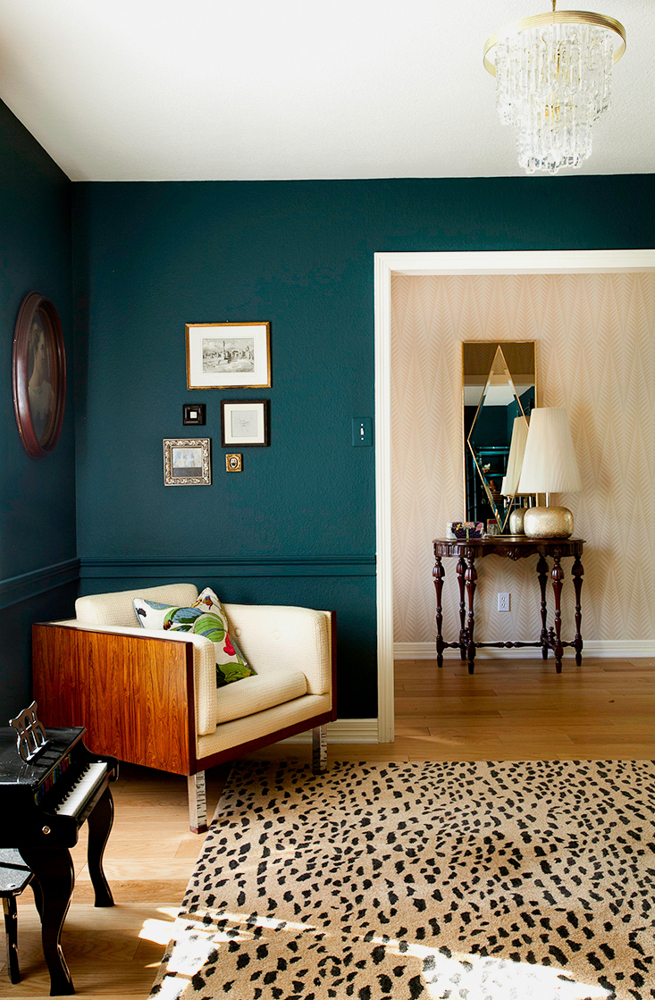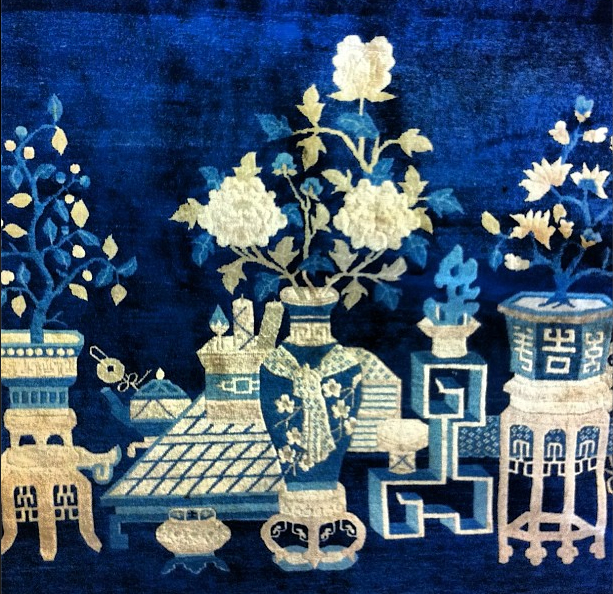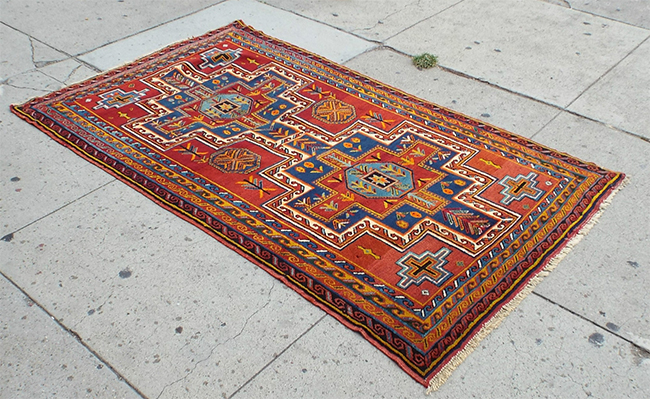First of all, thank you for the kind comments about the site redesign! It's definitely a work in progress since I finished construction on the fly, so please let me know if you encounter any technical difficulties. And for those of you mourning the loss of a certain beribboned zebra, that guy may stage a comeback tour. You just never know what might happen around here. If you're following me on instagram you might recall my tears of regret over leaving this rug behind:
It was a 4x6 handknotted Chinese rug of some sort... maybe antique Peking? I don't know as much about those types of rugs as others. Anyway it was of excellent quality and I am in dire (using that term loosely) need of a rug for the foyer that you can kinda sorta see here:

Problem is Chinese rug had an east/west design and I have a north/south entry. Still, it was only $80 and I stood in the store hemming and hawing for half an hour before walking away with my lip on the floor. Stupid cheap rug.
But then I picked myself up, dusted myself off, and turned to ebay in a quixotic quest for an affordable antique caucasian rug. "Affordable" and "antique" do not belong in the same sentence.
For example, this rug blows my mind up. Sure, it's only a 4x7 and $700 -- which is more than I would spend on a 9x12 rug, but LOOK AT IT! Over 100 years old and in fabulous condition. I love that you can see where the weaver changed her mind and switched to a different color. So much work, beauty, and history wrapped up in such a functional package. I have considered selling body parts and/or children for this rug.
I am really drawn to crazy abrash in vintage and antique rugs. If you don't already know what abrash is, let annoying Professor Erin tell you: it's those bands and striations of color change that happen naturally over time where wool from different dye lots has been used. Tribal rugs are made on location with small vats and therefore small dye lots. So as they age some of these rugs tend to exhibit crazy abrash due to the differing amounts of dye used. You don't see near the amount of abrash on city rugs because they have vats big enough to dye wool for an entire rug.
Here is a tribal rug where the chosen colors are super consistent, but there is still a fair amount of abrash in the field area. I think it gives it a lot of depth. It's a super old rug and that particular blue is very hot on ebay. Hot = $$$ and my paltry bid got smacked down and stomped on.
Normally I wouldn't be looking at flashy rugs with so much contrast, but since it's for my foyer and will kind of stand alone like a piece of art for the floor, I figured I could afford to get nutty. Except I can't actually afford flashy or nutty.
Here's another rug I was massively outbid on. $500 for a 4x6 and that is CHEAP for one of the better antique rugs. This rug was made in the 1920s, which I think is a sweet era in terms of age and design aesthetic. I pretty much always like a persian rug woven in the 20s.
A lot of 19th century rugs anywhere near a middle class budget have major wear, brittleness, and loss of edges. I'm not really into the ancient but trashed look -- I prefer medium old and structurally sound with some pile left. Look how delicious and velvety soft this is! I want to rub my face all over it. The seller has the rug folded to demonstrate "flop" which is a desirable quality in handwoven rugs.
And here's the rug I finally bought. It's by far the least exciting of the rugs I just showed you, but it's fairly old, clean and in good condition. I like the tight weave and colors, the seller was nice (that counts in my book), and best of all it was also only $130 shipped. Hopefully I won't fall asleep just looking at it on my floor.
If it doesn't work in the foyer, I'm thinking it can disguise the hideous tiles in my (still) hideous kitchen.
And then I can buy more rugs!
Because apparently that's what I do.






